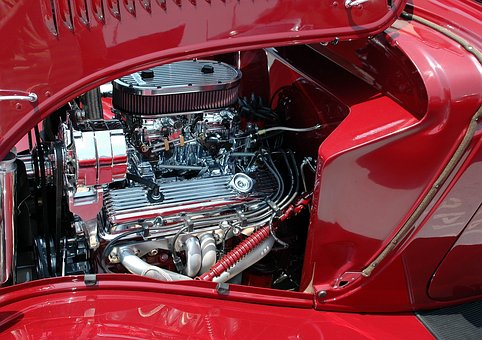8 Things You Didn’t Know About Your Vehicle’s Horsepower
 For many people who purchase a vehicle, one of the main requirements is that it have plenty of horsepower. Whether you are driving a little red sports car, a classic Mustang, or perhaps a pickup truck with one of today’s biggest and most powerful engines, horsepower plays a big role in the type of vehicle a person chooses to drive. However, while most people want their vehicles to have as much horsepower as possible, most people know little if any of the specifics surrounding horsepower. If your curiosity has been peaked, then it is time to get your questions answered. Ready or not, here are eight things you did not know about your vehicle’s horsepower.
For many people who purchase a vehicle, one of the main requirements is that it have plenty of horsepower. Whether you are driving a little red sports car, a classic Mustang, or perhaps a pickup truck with one of today’s biggest and most powerful engines, horsepower plays a big role in the type of vehicle a person chooses to drive. However, while most people want their vehicles to have as much horsepower as possible, most people know little if any of the specifics surrounding horsepower. If your curiosity has been peaked, then it is time to get your questions answered. Ready or not, here are eight things you did not know about your vehicle’s horsepower.
1- 20 Horsepower Vehicles
Believe it or not, even if you own a compact car that by today’s standards may not possess huge amounts of horsepower, it would be considered a titan compared to the days of the Model T. In fact, when Henry Ford first started introducing Americans to the Model T, it had only 20 horsepower. While that may not sound like much, for people who had been used to getting around with a horse and buggy, it was more than enough. Actually, since there were many accidents involving cars early on, some politicians and others actually thought the cars should have been made to go slower. More details about this can be found here.
2- Ponies and Coal Mines
Believe it or not, your vehicle’s horsepower is linked to ponies that pulled coal out of mines. The term horsepower, which was invented by James Watt, was done so after he observed teams of ponies pulling wagons of coal out of local mines. However, while the word horsepower is used internationally, it is actually not recognized by the International System of Units as a measurement standard. More about this can be found here.
3- 247 Horsepower
According to the latest industry statistics, the average vehicle on the road today has 247 horsepower. Since the 1980s, horsepower in vehicles has increased 112 percent, and most auto industry experts believe this trend upward will continue for many more years.
4- Why Horsepower Increases
If you have never thought about it before, there are many logical reasons why horsepower tends to increase. In most cases, it involves three factors, which are drops in oil prices, a strong economy, and federal fuel economy standards being slightly relaxed. When these factors come together, consumers are able to spend more on gas, and thus can afford to drive vehicles with bigger engines and more horsepower.
5- Improving Fuel Mileage
With automakers using much more technology in today’s engines, fuel mileage continues to improve even in the biggest of engines. According to leading automakers, the average vehicle now gets almost 28 miles per gallon, which is a big improvement from 1960, when a typical vehicle barely got 12 miles to the gallon.
6- Engine Power Standards
When your engine’s horsepower is measured, a number of factors are used. Based on test standards from the American Society of Engineers, horsepower is measured based on how an engine performs in various atmospheric conditions, such as humidity, temperature, and pressure.
7- Faster Accelerations
As horsepower has increased, so has the ability of most vehicles to accelerate in a much faster manner. Using the standard 0-60 miles per hour test, many of today’s vehicles that possess the most horsepower can quickly reach 60 miles per hour. Two of these are the Ford Mustang and Chevrolet Camaro, both of which are considered American classic muscle cars. Based on current results, a Mustang can go from 0-60 mph in only 5.1 seconds, while a Camaro can do the same in six seconds.
8- Motor Vehicle Dynamometers
When it comes time to measure a vehicle’s horsepower, engineers rely on a motor vehicle dynamometer. When a vehicle is attached to this, its wheels accelerate a large roller, known as the Power Absorbing Unit (PAU). By measuring the inertia on the roller, engineers can then determine horsepower, taking into account any losses associated with the vehicle’s drive train, alternator, fans, and exhaust system. Thus, the engine’s power and torque can be calculated, resulting in a very accurate horsepower rating.

















